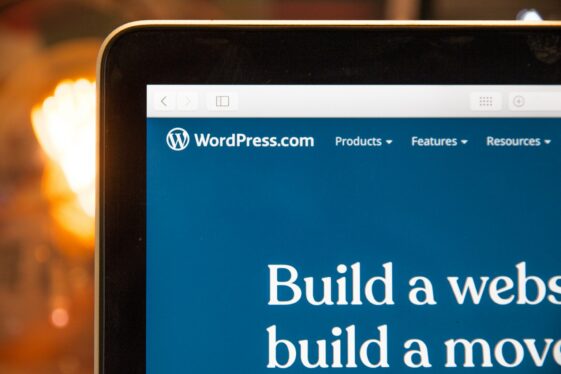Exploring the Benefits of Web Personalization

Exploring the Benefits of Web Personalization
Hi *|FNAME|*
It started with a simple idea—develop web technology that could pull existing data to personalize messages. When a business had great data management skills, this worked wonders. When they didn’t, things would turn out a little less than perfect to say the least.
But the effect of successful personalization was so profound that it inspired a boom of innovation involving the technology that makes customization possible.
Today, personalization is an entire discipline on its own in the world of web development. Now it’s a lot more than adding a custom greeting to your latest email campaign.
Web personalization has become the way to connect with your audiences.
How Website Personalization Works
Talking about how web personalization works will lead down a complex, rambling road filled with a history of technical obstacles and challenges.
With so many variables to think about, developers work hard to build out the tech necessary to push the limits on what defines a personalized user experience.
When giants like Amazon and Google invest huge amounts of money to turn the data they collect from their users into actionable customizations for their users, the average site visitor starts to expect more and more personalization from every web experience.
The good news is that you don’t have to expect to spend billions in order to deliver a great experience for your audiences. In fact, the investment will be significantly lower when you pair with web pros that know how to work with the solutions that will impress site users.
But where to start?
What does the data say?
If you’ve got a great data management process in place and your developers and content designers are up and running in the same direction as your audiences—that’s awesome.
If not—or if you’re always on the lookout for ways to improve and grow—pull up that Google Analytics account to get a rundown on visitor behavior.
When it comes to discovering opportunities for personalizing your user experience, your users themselves are the ones who will best tell you where to start.
- How much time are they spending on your site?
- Where are they spending the most time?
- What are the top resources they’re looking for?
- What time of day do they visit your site?
- What part of the world are they in?
Depending on your current analytics setup, you can do a deep dive into audience behaviors that will tell you where it’s important to personalize.
Same goes for any CRM programs that you’re currently using.
- How are your customer records segmented?
- What kind of data do you collect from site visitors when they sign up for a newsletter?
- What other information do you have from your members?
Personalization begins in the data. From there, you can make informed choices about where to put your developers to work.

But really, who is your audience?
You’ve got both teams talking to each other over website data, but is there even more than just demographic details that can guide personalization?
This is one of the intriguing intersections between web development and marketing.
At some point, someone, somewhere in your business has had contact with a real person—a customer, a member, a client at another business.
Chances are a few people on your sales, marketing, or outreach teams have collected valuable insights about what type of people your business is working with. You can even dig into your social media channels to get an idea of the attitudes, interests, and lifestyles of the people you serve.
Psychographic details like these don’t just help you refine your SEO strategy. They can determine how you personalize the user experience on your website.
Effective SEO and a strong social media presence draw audiences into your website.
The thoughtfulness, effort, and drive you put into those should be mirrored in the user experience when they get there.
Getting a holistic view of your audience backed by data and personal insights makes all the difference in the world when you make decisions about where, how, and when to personalize a user experience.
It’s how Netflix knows to pull up Feel Good Education and Guidance Starring Muppets under your daughter’s profile, and Steamy Independent British Dramas under yours.
They look at more than just your watch history. They put a ton of effort—and money—behind getting to know who is in their audience.
Develop a Web Personalization Strategy
You don’t have to be running at the scale of Netflix to work with the same foundational principles for delivering a highly-personalized web experience.
If you get the strategy right, the resources you build out will make it possible to scale customizations as your business grows.
Start with the data and audience insights that you have. From there, pull together a portrait of who is interacting with your business—and why they come to you.
Next, clearly identify your business goals. After looking over the data you have, you’ll be inspired by some opportunities to increase conversions, improve bounce rates, or engage members in conversation on new platforms.
In the space where the needs and characteristics of your audience come together with your goals, you’ll find the best areas to target with personalization.
- Do you have a global membership and create geo-specific content?
Here’s a chance to design a gated area for content that when members sign in, they immediately see what’s new for their part of the world because you’ve programmed their profile with their geographic location. - Does your business offer resources that help people with their personal lives outside of work?
Add a banner greeting that changes with the time of day to say “Good Morning”, “Good Afternoon”, or “Good Evening” to give your users the feel that you’re online to help 24/7. Personalize chat scripts that greet someone not just with the time of day, but that notice what page they’re on and ask about details specific to that page. - Are you selling products on a site that already collects cookies?
Then build a solution that recognizes a user’s past actions and apply that to any new product landing pages on your site. Personalize recommendations and keep people clicking through your site for as long as possible, filling their carts up.
These are just a few examples of where to invest in the technology on the backend.
Ultimately, what makes sense for your website will come out of the strategic roadmap that identifies where you and your audience share goals in common.

Types of Web Personalization
There are a handful of concepts that drive personalization on the internet today, and you’ve likely come across examples of each one while browsing online.
Explicit personalization happens when you provide options for your users to interact with and provide you their information. This can happen by asking users to fill out profile details or presenting them with a form that collects and stores their preferences.
If you’re in the business of selling surf gear, asking a user to select their location and storing it in cookies could personalize targeted discounts for their area or even load a banner with tide times on their local beach.
Providing visitors the option to explicitly customize certain details gives you the ability to give them relevant, timely, and appropriate content.
Implicit personalization requires a complex data collection apparatus. This is where major sites like Amazon, Google, NYTimes, and Netflix devote top dollar to build out the technology that makes this type of personalization possible.
The idea here relies on a background collection and collation of a user’s browsing history, watch history, clickthroughs, location—any information or behavior that can be tracked.
With that massive sum of data, they program hyper-personalized suggestions relevant to their business and customer needs.
While this type of personalization drives a significant amount of innovation in underlying technology, the scale at which it’s operating for something like Amazon is impractical for most other businesses.
But you don’t need to be a Google, Netflix, or Hulu to strike a personal note with your community of users.
When you’ve built your web personalization strategy and clearly identified the personalized features that are the best direction for your audiences, you’d be surprised at the sleek and simple solutions that the right web pros will find to meet your needs.
Experience-based personalization is an alternative to chasing after non-stop data collection. What you already have access to can help you determine what sort of activity from your website engages your users.
In addition to your analytics software, things like heat maps or scroll maps from Hotjar summarize user activity on your site.
With that information, you can plan for some great A/B testing to get an idea of how your users respond to interruptive experiences like pop-ups or push notifications versus seamless experiences that carry a user smoothly between personalized and non-personalized content on your site.
So *|FNAME|* Are You Ready to Get Personal?
With almost 2 billion active websites online today, adding a personalized experience to yours is the door to building long lasting relationships with your audiences.
However, achieving the same quality of personalization through a website that you can get from face-to-face conversations is a challenge.
The top businesses in the world still get caught scratching their heads about this from time to time.
But this is the kind of stuff that we love to do. We have web experts and creative thinkers ready to innovate on solutions for connecting you with your users.
Whatever stage you’re on in your journey to delivering personalized content and experiences on your website, we want to hear from you. Reach out to us with your questions—we’re ready to collaborate.


